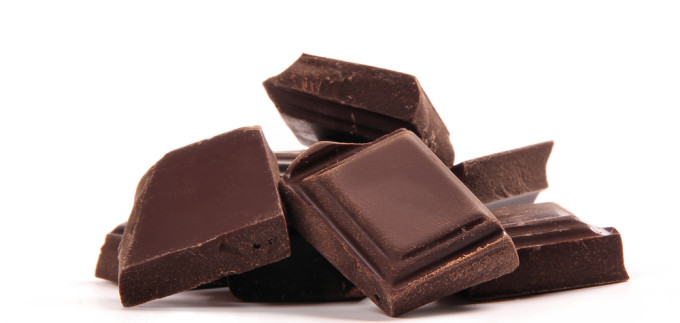Lead is well known to cause neurological damage, particularly in children. In 2012, the Centers for Disease Control and Prevention lowered what it considers “elevated lead exposure” for children from 10 to 5 parts per million. What this amounts to, says Boston University School of Medicine professor of pediatrics and public health Sean Palfrey, is that “No amount of lead ingestion is safe for children.” What’s more, “lead exposure is cumulative”—it builds up in the body—explains Bruce Lanphear, Faculty of Health Sciences professor at Simon Fraser University.
As both Lanphear and Palfrey explain, chocolate is unlikely to be the only source of lead to which someone is exposed. And as anyone with a sweet tooth can attest, it can be hard to stick with a single recommended serving.
Long-term, low-level exposure to cadmium can cause bone, kidney, and liver damage. In animal studies, cadmium has also been shown to cause developmental, reproductive, and neurological harm. There are also concerns about prenatal exposure to both cadmium and lead.
It’s for these reasons that California has established safety limits and requires warnings on products that exceed them. And it’s on this basis that As You Sow filed notices of legal action today against three major chocolate brands alleging violation of California’s law known as Proposition 65, for failing to warn consumers of cadmium in their chocolate products–and against 13 brands for failure to issue warnings about lead and cadmium.
This is the fourth time As You Sow has filed notices against chocolate companies on such grounds. The organization filed notices–naming many of the same brands in today’s filings–in July, November, and December 2014. Another organization filed such notices back in 2002, but they were withdrawn before coming to trial.
Research into lead and cadmium contamination of chocolate and cocoa dates back at least 10 to 15 years. Studies have found these metals in chocolate purchased all around the world. A survey by the U.S. Food and Drug Administration (FDA) published in 2000 found milk chocolate bars to have the fourth highest lead concentration of all the food it tested. Lead content in some dark chocolates do exceed what FDA considers an acceptable children’s exposure level, but because children don’t eat very much dark chocolate, the agency does not appear to be concerned about this exposure.
How do these heavy metals get into chocolate in the first place? Scientists point to environmental contamination, primarily of soil, as a likely culprit. But air pollution may also be a factor as cacao beans are often dried outdoors. A 2005 study found high levels of lead in chocolate sourced from Nigeria. The authors suspected that air and soil contamination from leaded gasoline were to blame. It’s also thought that lead may enter at other points in the chocolate manufacturing practice.
Meanwhile, the industry group Responsible Cocoa, an international coalition of chocolate manufacturers that works in the U.S. with the National Confectioners Association, says that “most of the naturally-occurring lead is in the cacao bean shell, which is removed during processing.” It also notes that “FDA and other health authorities have determined that tiny traces of naturally occurring heavy metals in foods are unavoidable and present no public health risk.”
Asked about heavy metals in chocolate, Hershey’s, which owns Dagoba—one of the brands named—said in a statement, “People have been eating cocoa and chocolate for centuries with no evidence of a single incident of concern regarding these naturally occurring minerals.”
As You Sow disagrees with the industry’s use of the term “naturally occurring,” explaining that these contaminants end up in the environment and hence in cacao due to anthropogenic—or human caused—processes. Proposition 65 regards environmental contaminants in the same way.
As You Sow has not identified any specific links between where the chocolate comes from and its lead content—but that’s mostly because manufacturers don’t typically reveal cacao origins, says van Vliet. There also appears to be no clear pattern of brands affected as they span the range of chocolate on the market.
So how concerned should we be? According to Palfrey and Lanphear—both practicing pediatricians and lead experts—the lead an adult might be exposed to in chocolate may be small, but it adds up and can be harmful to infants and children. And there’s no easy way to find lead-free brands. As Palfry sees it, more testing throughout the process would be a step in the right direction. “These exposures are preventable,” he says—before chocolate gets to the store shelf.
